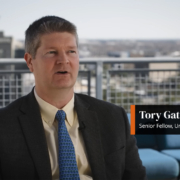Regulation of Electric Power in Texas
Politicians, pundits, and the public at large have voiced deep concern that electricity was tragically unavailable to many Texans during the recent period of extreme cold. Claims that lax ERCOT planning caused the problem are exaggerated. “Grid independence” from federal regulation is manageable. The problem lies in the supervisory structure that regulates the Electricity Reliability Council of Texas (ERCOT) – Texas’ Public Utility Commission (PUC), a three-member panel appointed by the state legislature, and our elected officials, ultimate guardians of the public interest.
To start, claims that ERCOT’s planning process is undisciplined are misleading. Published documents (December 2020, January 2021) evidence well-structured scenario planning of capacity, demand, and reserve margin, including grid requirements and fuel types. True, evolving events brought conditions not premised in these studies but laxness is an unwarranted criticism.
The next layer of electric power management: Oversight of ERCOT by the PUC. Here, critical commentary by knowledgeable observers is valid. To begin with, independent management of Texas’ power grid – that is, independent of the Federal Energy Regulatory Commission (FERC) – rests on reasonable logic, not merely the fabled secessionist tendencies of Texans.
Two conditions in combination make Texas electrically unique. First, the ERCOT grid embraces abundant energy resources as well as large urban demand centers, thus the energy system within ERCOT’s reach can self-supply. (“Supply” goes beyond fossil sources. The barren mesa region of west Texas is reliably windy.) Next, the grid’s regional limits follow state lines to a high degree; the political boundaries of Texas align with grid infrastructure, El Paso and portions of the panhandle and east Texas excepted. The first condition (grid independence) allows supply without power purchase from other states, hence authority to operate free from regulation by the Federal Energy Regulatory Commission (FERC); the second facilitates rule-making and goal-setting, from the state legislature to PUC to ERCOT.
Results of FERC-independent behavior are subject to debate; certainly positive outcomes can be offered. ERCOT’s market-based model coupled with strong transmission infrastructure linking generation to consumers have enabled rapid growth of competitively-priced electricity sourcing, most recently wind generation and prospectively, solar. ERCOT’s fuel mix report states that wind plus solar accounted for more than 20% of generated electricity in 2020.
However, specific policies of a perhaps lenient regulatory framework appear unwise and call for revision. A large proportion of winter electricity supply anticipated by ERCOT was disabled by frigid weather because established standards for deep-cold winterization had not been implemented. In televised appearances Bill Magness (ERCOT CEO) and Dan Woodfin (Director, System Operations) explained that such standards are provided to generators on an advisory basis, not mandated.
Also, ERCOT manages generation adequacy by pricing methodology, which failed in this severe case. Reserve capacity, like winterization, may require measures beyond market-based methods (a mandate). Of course, bulking up reserve capacity alone would be inadequate in the absence of stricter winterization. Backup generators incapable of startup would have been of no help to Texans in the cold light of dawn on February 15.
Clearer, more aggressive communication to the public might have saved untold damage and pain. Meaningful public advisories that could have helped Texans to safeguard property (and life) were late and limited. Future communication protocols must require updates on rotating or extended blackouts, health and safety information, and practical advice to prevent freezing of water systems.
So, a call to our governor, legislators and PUTC commissioners: Draw yourselves up to full stature, recognize that Texans’ lives are at stake, and formulate firm guidelines (yes, non-market guidelines where necessary) on winterization, reserve capacity, communication, and other requirements that will flow from the public hearings that Dan Phelan, speaker of the Texas House, has so sternly announced. You must put right the executive functions linking our legislature to the PUC and to ERCOT.
Texans suffered due to physical climate conditions, here a word on the political climate. Both major parties must acknowledge shared responsibility for past power decisions. Democrats: Recognize that efforts to decouple Texas from FERC originated when democrats controlling Texas politics acted to shield Texas companies from federal regulators.
Republicans: Abandon the failed narrative that renewables caused the shortage – this is nonsense. Abandon also the impulse to label renewables as menacingly “liberal”, therefore unworthy of service to the lone star state. For one thing, such pronouncements violate the market basis for electricity sourcing that you claim to champion. Recall also that Senator Chuck Grassley of Iowa, a Republican, is justly regarded by many as the father of wind energy – at least, father of legislative enactment of the wind operating tax credit, a spur to the growth of wind generation.
Our leaders must tame their rhetoric, mandate best operating practices, and modify market-defined guidelines where required to protect Texans.
This piece first appeared on Houston Strategies.
Jim Crump is an energy and chemical industry leader with a depth of industry experience gained with Shell, Accenture Consulting, DuPont, and ExxonMobil, who focuses on energy transition and sustainability.








 Brian Bennett, used under CC 2.0 License
Brian Bennett, used under CC 2.0 License Market Urbanism Report
Market Urbanism Report